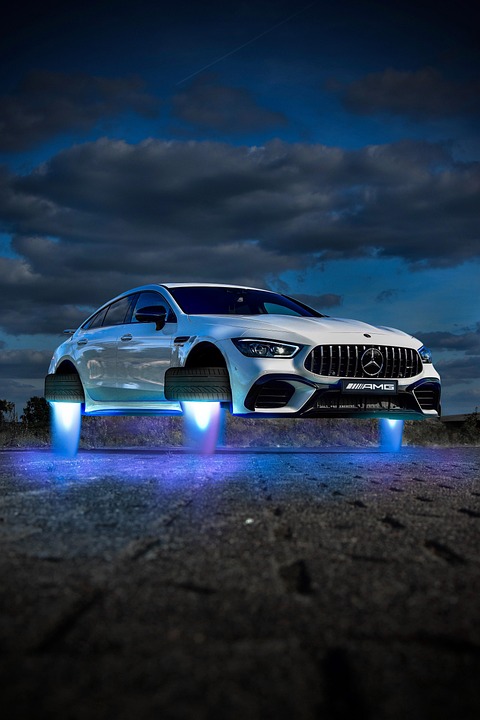The Art of the Possible: How Concept Cars Inspire Future Designs
The automotive industry is a realm where imagination and engineering intersect, breathing life into the revolutionary ideas that shape our future. Central to this innovation are concept cars, vehicles that serve as both art and science, encapsulating the visions of designers and engineers. These stunning prototypes not only ignite our collective imagination but also set the tone for production models that follow. This article explores how concept cars inspire future designs, shaping the trajectory of automotive technology.
What Are Concept Cars?
Definition and Purpose
Concept cars, often referred to as prototype vehicles, are designed to showcase new styling ideas, innovative technology, or groundbreaking features that manufacturers wish to explore without the immediate pressure of production. Manufacturers use these models to gather public reaction and press feedback, influencing future designs. Essentially, a concept car is an exploration of what a vehicle could be rather than what it must be, making them a canvas for creativity.
Examples of Iconic Concept Cars
Several concept cars have left an indelible mark on the automotive landscape:
- BMW GINA: This innovative design features a flexible fabric skin that molds into different shapes, demonstrating the potential of adaptive vehicle design.
- Tesla Roadster (2006): While it appeared as a concept, it set the framework for Tesla’s electric future, merging high performance with sustainable technology.
- Lexus LF-1 Limitless: An avant-garde crossover showcasing an array of hybrid technologies, emphasizing luxury while maintaining eco-friendly performance.
The Impact of Concept Cars on Future Designs
Catalysts for Innovation
-
Technological Advancements: Concept cars are a launchpad for new technologies. For instance, advanced battery systems and autonomous vehicle features often debut in these designs to gauge consumer interest and feasibility.
-
Sustainability Solutions: As manufacturers face increasing pressure to reduce their carbon footprint, many concept cars explore alternative energy sources like hydrogen fuel cells or solar panels, paving the way for sustainable production vehicles. The Toyota Mirai is a practical example stemming from such innovations.
- Design Trends: Concept cars often set or reflect trends that will manifest in subsequent production models. Features like sleek lines, aggressive stances, and futuristic interiors seen in concept cars frequently transition to mainstream designs.
Forecasting Consumer Preferences
Manufacturers often use concept cars to predict consumer desires and market shifts. By tapping into futuristic aesthetics and advanced technology, companies can create vehicles more aligned with evolving lifestyles. For example, the rise of the SUV segment was foreseen by the emergence of concept vehicles showcasing larger cabins and increased versatility.
Influencing Brand Identity
Concept cars serve as a brand’s testbed, allowing automakers to experiment with their identity—be it luxury, performance, or sustainability. For example, Audi’s Q4 e-tron concept reinforces its commitment to electric vehicles, reflecting a shift in both branding and consumer demand.
The Process of Transforming Concepts into Production Models
From Imagination to Reality
While concept vehicles may remain on the drawing board or at auto shows, many elements eventually transition into production models. The journey typically follows several stages:
-
Design and Development: Initial sketches evolve into 3D models, requiring rigorous testing for performance, safety, and consumer demand.
-
Consumer Feedback: Automakers often solicit feedback during auto shows to understand consumer reactions, which can significantly influence design adjustments.
- Production Feasibility: Key features are evaluated for cost and manufacturability, ensuring the production model remains economically viable.
Bringing Innovations to Market
Once a concept demonstrates viability, manufacturers begin the complex task of manufacturing. Innovations, whether in technology, materials, or production methods, become integral to volume production. The Ford GT, originating from a concept, showcases how racetrack innovations can translate into consumer vehicles.
The Future of Concept Cars
Shaping Tomorrow’s Vehicles
As we journey toward an increasingly electrified and autonomous future, concept cars will become more critical than ever. They will guide the industry through:
-
Greater Automation: As autonomous technologies become more prevalent, we will see concept cars that embody these advancements, reshaping how we view personal mobility.
- Enhanced Connectivity: There will be an increased focus on in-car technology, integrating AI and IoT systems to consume entertainment, information, and communication effortlessly.
Expanding Horizons
Expect to see:
- A Risque Approach to Design: Concept cars might push boundaries unapologetically, breaking traditional molds in design and function.
- Mass Customization: Innovations in 3D printing and modular approaches may transform how vehicles are tailored to individual needs.
Conclusion: The Inspiration Behind Innovation
The world of concept cars serves as the fertile ground for the automotive industry’s future. By blurring the lines between fantasy and tangible reality, these vehicles spark the innovations that will define upcoming generations of cars. As we look to the future, we can anticipate that the visions conceptualized today will materialize into the beloved vehicles on our roads tomorrow. For enthusiasts and manufacturers alike, the passion for pushing boundaries illustrates that, indeed, the art of the possible continues to be painted in every concept car.
So the next time you marvel at a sleek design on display, remember: underneath its striking exterior lies not just creativity but the spirit of innovation ready to reshape our driving experience.


